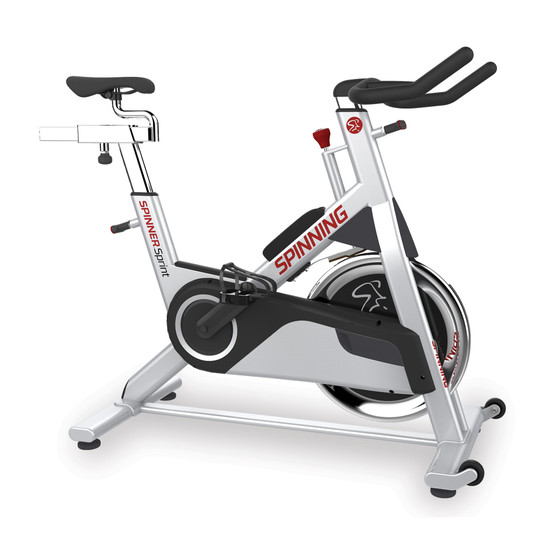A Comprehensive Comparison: Spinning Bike vs Upright Bike - Which One Is Right for You?
Introduction to Spinning Bikes and Upright Bikes
In the world of fitness equipment, two popular choices for indoor cycling are spinning bikes and upright bikes. Both offer unique advantages and cater to different fitness needs. As individuals embark on their fitness journeys, understanding the key differences between these two bike types can help them make an informed decision that aligns with their goals and preferences.
Spinning bikes, also known as indoor cycling bikes or studio bikes, are designed to simulate the experience of riding a road bike. These stationary bikes are equipped with a heavy flywheel, which provides resistance and a smooth, challenging workout. Upright bikes, on the other hand, are more similar to traditional outdoor bicycles, with a more upright riding position and a focus on overall fitness and cardiovascular health.
Key Differences between Spinning Bikes and Upright Bikes
The primary differences between spinning bikes and upright bikes lie in their design, resistance mechanisms, and the overall workout experience they provide.
- Riding Position: Spinning bikes feature a more aggressive, forward-leaning riding position, similar to that of a road bike. This position engages the core muscles and allows for a more intense, high-energy workout. Upright bikes, in contrast, have a more upright and relaxed riding position, which is more suitable for a broader range of users, including those with back or joint issues.
- Resistance Mechanism: Spinning bikes typically use a heavy, weighted flywheel to provide resistance, which can be adjusted to simulate different terrain and intensity levels. Upright bikes, on the other hand, often use magnetic or eddy current resistance, which offers a more consistent and adjustable resistance throughout the workout.
- Workout Intensity: Spinning bikes are designed to deliver a high-intensity, calorie-burning workout, with the ability to increase resistance and simulate hill climbs or sprints. Upright bikes, while still providing a cardiovascular workout, tend to be better suited for moderate-intensity, longer-duration sessions.
- Noise Level: Spinning bikes, with their heavy flywheels, can produce a more significant amount of noise during use. Upright bikes, with their magnetic or eddy current resistance, tend to be quieter, making them more suitable for home use or shared living spaces.
- Adjustability: Spinning bikes generally offer more adjustability options, such as the ability to change the seat and handlebar positions, to accommodate users of different heights and body types. Upright bikes may have fewer adjustment options, but they can still be customized to fit the user's needs.
Benefits of Spinning Bikes
Spinning bikes offer a range of benefits that make them a popular choice for fitness enthusiasts:
- High-Intensity Workouts: The combination of a heavy flywheel and adjustable resistance allows users to push themselves to their limits, leading to a highly effective, calorie-burning workout.
- Targeted Muscle Engagement: The forward-leaning riding position on a spinning bike engages the core, glutes, and leg muscles more intensely, resulting in a full-body workout.
- Customizable Resistance Levels: Spinning bikes offer the ability to adjust the resistance to suit individual fitness levels and training goals, making them suitable for users of all abilities.
- Variety in Workout Routines: Spinning instructors often incorporate interval training, hill climbs, and other challenging exercises into their classes, keeping the workouts engaging and dynamic.
- Competitive Environment: Many spinning studios and gyms offer group classes, which can provide a motivating, competitive atmosphere and a sense of community.
Benefits of Upright Bikes
Upright bikes also offer a range of benefits that make them a viable option for those seeking a more versatile fitness experience:
- Comfortable Riding Position: The upright, more relaxed riding position on an upright bike is easier on the back and joints, making it a suitable choice for users with certain physical limitations or preferences.
- Versatile Workout Options: Upright bikes can be used for a wide range of workout styles, from steady-state cardio to interval training, making them suitable for a variety of fitness goals.
- Lower Impact on Joints: The reduced impact on the knees and ankles compared to spinning bikes makes upright bikes a more accessible option for individuals with joint concerns or those recovering from injuries.
- Suitability for Home Use: Upright bikes tend to be more compact and quieter than spinning bikes, making them a better fit for home gyms or shared living spaces.
- Broader Appeal: Upright bikes cater to a wider range of users, from beginners to seasoned cyclists, making them a more inclusive option for those new to indoor cycling.
Factors to Consider When Choosing between Spinning Bikes and Upright Bikes
When deciding between a spinning bike and an upright bike, there are several factors to consider:
- Fitness Goals: If your primary goal is to achieve a high-intensity, calorie-burning workout, a spinning bike may be the better choice. If you prefer a more moderate, versatile workout, an upright bike may be more suitable.
- Physical Limitations: If you have any joint or back issues, an upright bike with its more relaxed riding position may be more comfortable and less stressful on your body.
- Space Constraints: Spinning bikes tend to be larger and bulkier, making them better suited for dedicated fitness spaces. Upright bikes are generally more compact and may be a better fit for smaller home gyms or shared living areas.
- Noise Tolerance: If you live in a shared living space or prefer a quieter workout environment, an upright bike with its lower noise level may be the better option.
- Budget: Spinning bikes can be more expensive than upright bikes, so your available budget may also be a factor in your decision.
Comparison of Features: Resistance, Adjustability, and Comfort
Resistance
- Spinning bikes typically use a heavy, weighted flywheel to provide resistance, which can be adjusted to simulate different terrain and intensity levels.
- Upright bikes often use magnetic or eddy current resistance, which offers a more consistent and adjustable resistance throughout the workout.
Adjustability
- Spinning bikes generally offer more adjustability options, such as the ability to change the seat and handlebar positions, to accommodate users of different heights and body types.
- Upright bikes may have fewer adjustment options, but they can still be customized to fit the user's needs.
Comfort
- The forward-leaning riding position on a spinning bike can be more challenging and demanding on the user's body.
- Upright bikes, with their more upright and relaxed riding position, are generally more comfortable for users, especially those with back or joint concerns.
Comparison of Workout Intensity and Calorie Burn
Workout Intensity
- Spinning bikes are designed to deliver a high-intensity, calorie-burning workout, with the ability to increase resistance and simulate hill climbs or sprints.
- Upright bikes, while still providing a cardiovascular workout, tend to be better suited for moderate-intensity, longer-duration sessions.
Calorie Burn
- Due to the high-intensity nature of spinning bike workouts, users can expect to burn more calories per session compared to upright bike workouts.
- However, the overall calorie burn can vary depending on factors such as the user's weight, workout duration, and personal fitness level.
Comparison of Price Range and Affordability
- Spinning bikes tend to be more expensive than upright bikes, with prices ranging from $500 to $2,000 or more for high-end models.
- Upright bikes are generally more affordable, with prices typically ranging from $300 to $1,000, making them more accessible for home use or budget-conscious consumers.
Tips for Choosing the Right Bike for Your Fitness Goals
- Assess your fitness goals: Determine whether your primary focus is on high-intensity, calorie-burning workouts or more moderate, versatile training.
- Consider your physical limitations: If you have any joint or back issues, an upright bike may be the more comfortable and less stressful option.
- Evaluate your available space: Spinning bikes tend to be larger, so ensure you have the necessary space for your chosen bike.
- Determine your budget: Upright bikes are generally more affordable, making them a better fit for those with a tighter budget.
- Try out different options: If possible, test out both spinning bikes and upright bikes to get a feel for which one suits your preferences and needs best.
Conclusion - Making an Informed Decision
When it comes to choosing between a spinning bike and an upright bike, there is no one-size-fits-all solution. The decision ultimately depends on your individual fitness goals, physical limitations, available space, and budget. By carefully considering the key differences and weighing the benefits of each bike type, you can make an informed decision that will help you achieve your fitness objectives and enjoy a rewarding indoor cycling experience.
Ready to take your fitness journey to the next level? Explore our selection of high-quality spinning bikes and upright bikes to find the perfect fit for your needs. Visit our website today to learn more and start your journey towards a healthier, more active lifestyle.


